Melodies are the heart and soul of a track, meshing together rhythm, pitch, and harmony to create an emotional journey that resonates with listeners.
They can express a wide range of emotions (from joy to devastation) and drive the narrative of a song, as well as its rhythmic flow.
So, as a music producer, it’s important to know all about different types of melodies and techniques.
This way, you’ll be able to create captivating songs that not only sound professional but also emotionally connect with your audience.
In today’s article, we’ll break down:
- The captivating power of different types of melodies ✓
- Essential melodic elements and their roles (rhythm, harmony, etc.) ✓
- Techniques for developing strong melodic lines ✓
- Creating complex melodies and standout chords ✓
- The significant impact of musical notes ✓
- Integrating rhythm to enhance melodic dynamism ✓
- Constructing coherent and expressive melodic phrases ✓
- Special considerations for creating vocal melodies ✓
- Much more about different types of melodies ✓
After diving into this article, you’ll be equipped with a solid understanding of melody creation so you can create show-stopping tracks every time.
You’ll possess the knowledge and skills to experiment confidently with any melodic style or technique.
This way, you can produce music that stands out in the competitive world of music production and songwriting like a true professional.
So, let’s dive in…
Table of Contents
- Type of Melodies: What Makes a Melody Captivating
- The Basic: Melodic Elements
- Techniques for Developing a Strong Melodic Line
- Understanding Musical Notes and Their Impact
- Rhythm and Melody: Creating Dynamic Rhythmic Melodies
- Composing Melodic Phrases
- Vocal Melodies
- Dynamics of Melodic Motion
- The Beauty of Harmony and Chords in Melodies
- Role of Instruments in Melody Creation
- Creating Your Own Unique Melodies
- Types of Melodies: Final Thoughts
Type of Melodies: What Makes a Melody Captivating
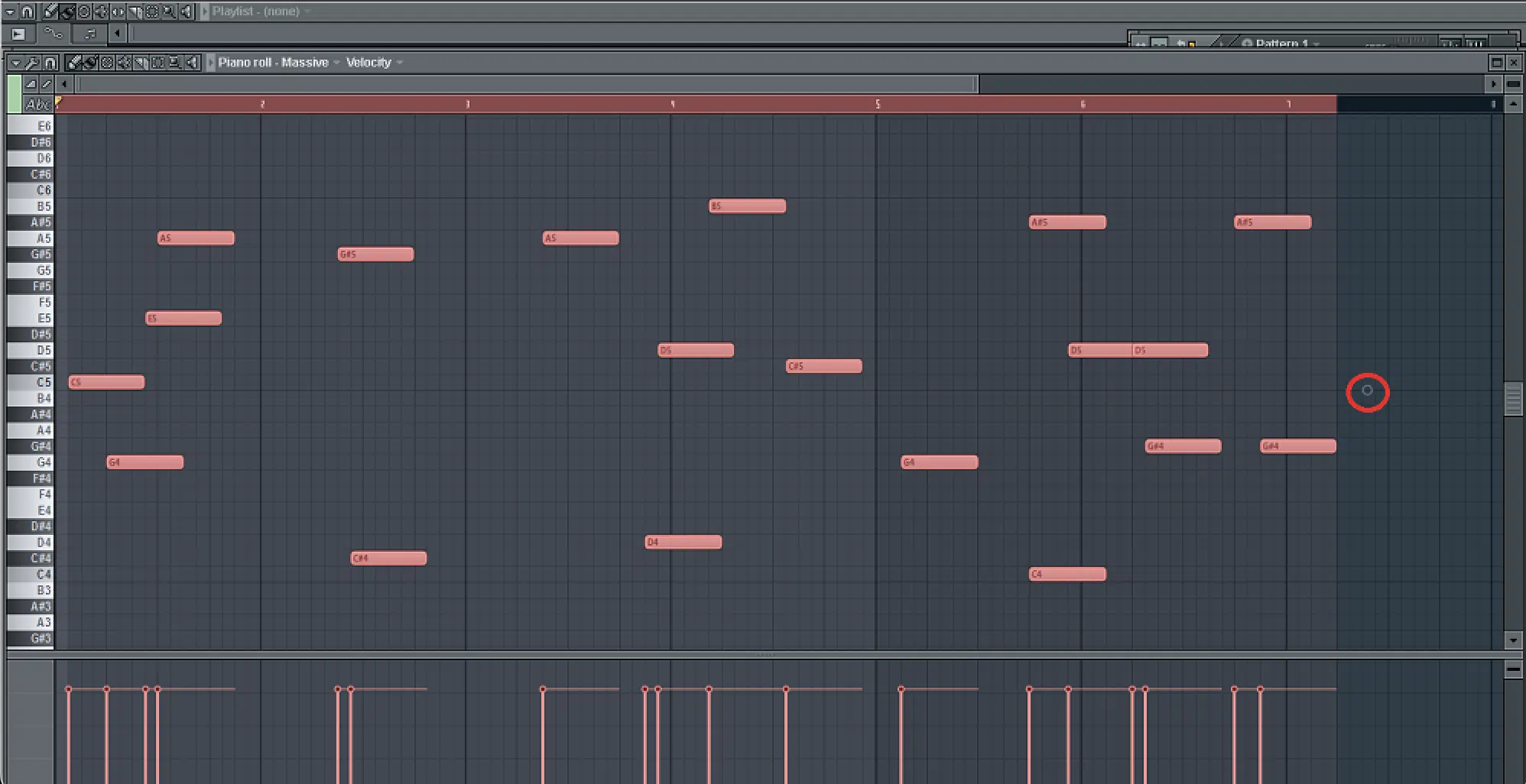
Melodies serve as the soul of a song, captivating listeners through their intricate design and emotional resonance.
Understanding the types of melodies and their components is essential for any music producer or musician aiming to create impactful music.
A well-crafted melody can define a song 一 making it memorable and emotionally intriguing.
The key lies in the combination of various melodic elements, each playing a role in constructing a narrative within the music.
The allure of a melody often resides in its ability to evoke emotions and create a connection with the listener.
From the simplicity of a single note (one note) to the complexity of a full-scale orchestration, the types of melodies to work with are endless.
Each one offers unique expressive possibilities and helps you find new sounds.
It is the thoughtful arrangement of musical notes, rhythm, and harmony that transforms a sequence of sounds into a compelling melodic line.
The Basic: Melodic Elements
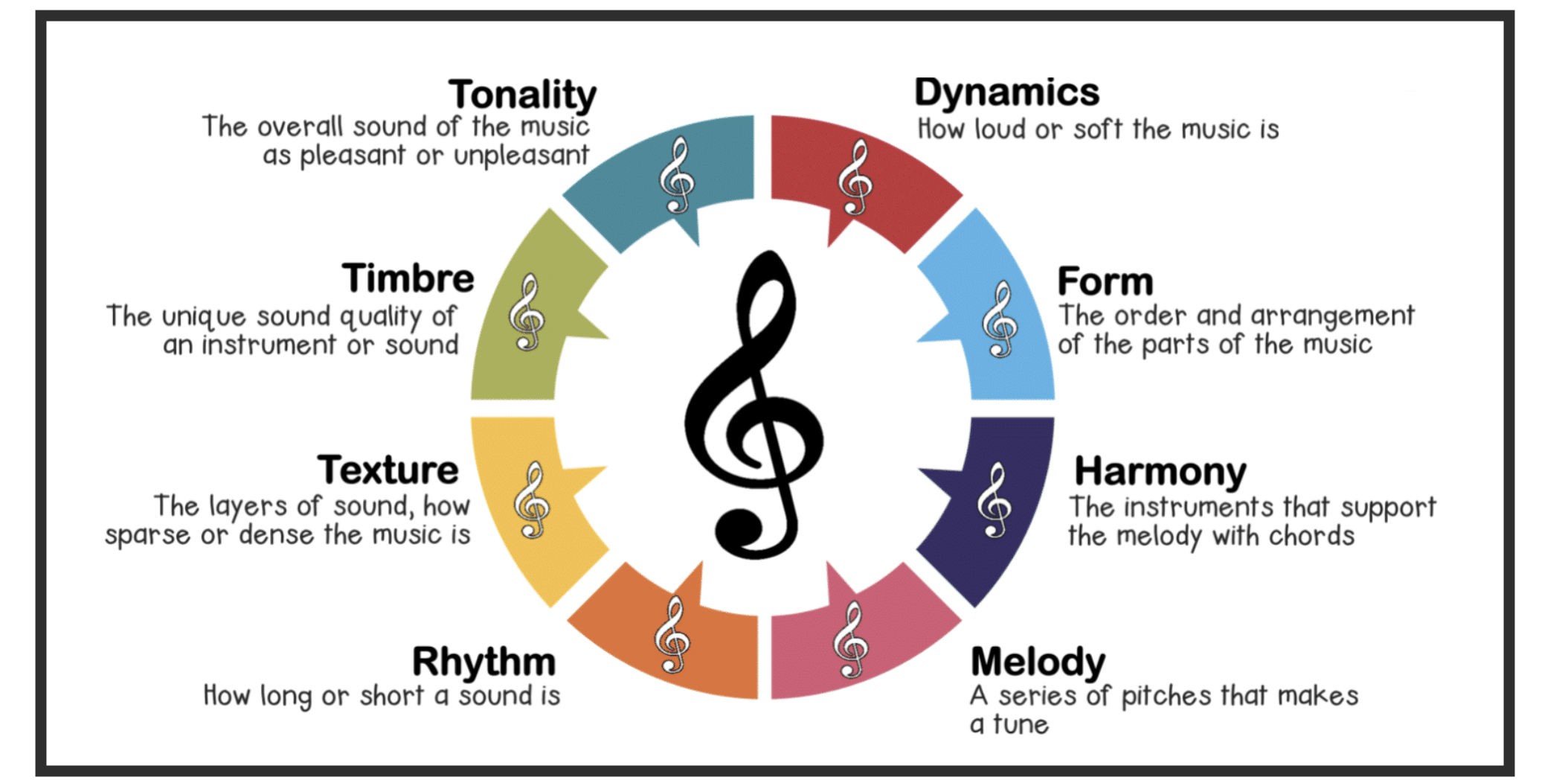
A melody consists of a few foundational, basic elements, which are:
These components work in unison to form the backbone of melodic construction.
Understanding these elements is super important for music producers to effectively manipulate and create melodies.
Pitch provides the melody with its tonal structure, while rhythm adds the temporal dimension 一 giving the melody its distinctive flow and tempo.
Harmony, though often considered a separate aspect, plays a vital role in supporting and enhancing the melodic line.
It creates a sonic landscape where the melody can flourish, adding depth, complexity, and intrigue.
In digital music production, the interplay of these elements allows for a wide range of creative possibilities.
This will help you create your signature melodic style and discover sounds that are unique to your vision.
Techniques for Developing a Strong Melodic Line
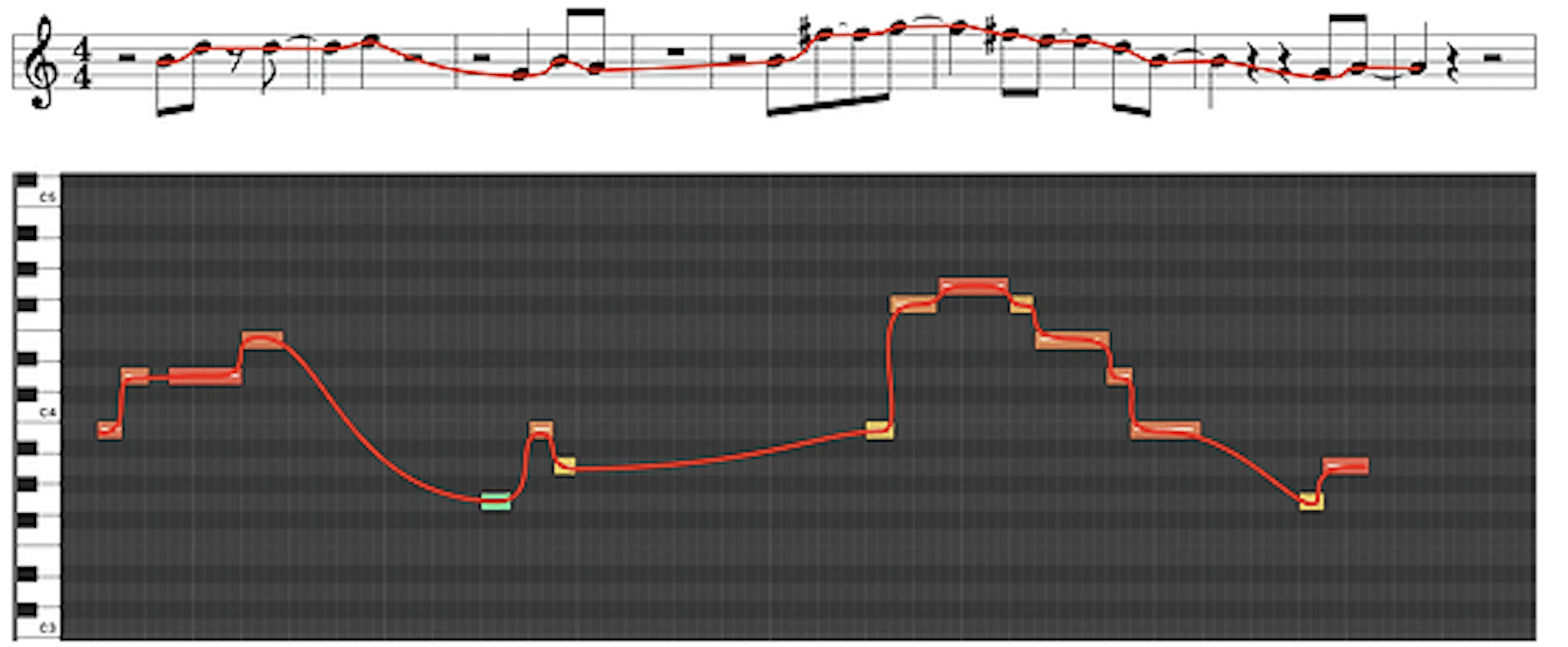
Developing a strong melodic line involves more than just stringing together musical notes.
It requires an understanding of melodic motion, which can be either conjunct or disjunct.
- Conjunct motion, where notes move in a stepwise motion, often creates a smooth, flowing melody
- Disjunct motion involves leaps between notes, offering a more dramatic and impactful character.
Effective melodic lines also consider the use of a certain rhythm and pitch variation.
A melody with a captivating rhythm can enhance the overall appeal of a song.
The use of varying pitch levels contributes to creating an engaging and dynamic melodic line.
NOTE: Utilizing software and synthesizers allows for experimentation with these elements.
It can help you play around with different musical techniques and push the boundaries of traditional melodic construction.
Another key aspect is the incorporation of melodic phrases, as they’re directly related to creating standout melodic lines.
A melodic phrase is a musical sentence, complete with a beginning, middle, and end 一 contributing to the larger narrative of the melody.
Creating these phrases (whether its a smaller phrase or longer phrase) with attention to their melodic contour and rhythmic structure is key.
It can significantly enhance the overall strength of the melodic line.
Understanding Musical Notes and Their Impact
Musical notes are the building blocks of melodies, each carrying a distinct sound and character. The choice of notes and how they are arranged within a melody can significantly impact the song’s emotional tone and listener’s experience.
-
The Significance of Note Selection

Selecting the right notes is crucial in shaping the overall feel and direction of a melody.
Musical notes determine the melodic range and set the boundaries within which the melody can operate and flow.
The use of scale degrees plays a significant role here, as they provide a framework for note selection 一 guiding the melodic line through various tonal landscapes.
In digital music production, note selection can be heavily influenced by the:
- Genre
- Intended mood of the song
- Musical vision/vibe
For example, a melody in a major key might convey a sense of happiness or optimism, while a melody in a minor key can evoke feelings of melancholy or introspection.
You must carefully consider (and play around with) your note choices to ensure that the melody aligns with the song’s overall theme and emotional intent.
-
Experimenting with Notes for Unique Melodies

Experimentation with notes is a vital aspect of music production.
It involves exploring different combinations of pitches and rhythms to create unique melodies (whether it’s one note/single notes, only two notes, or many).
This process often requires stepping out of traditional melodic conventions and trying unconventional note sequences.
One effective technique is to focus primarily on the use of chromaticism or incorporating notes outside the standard scale.
This can add a surprising twist to the melody, making it stand out and sound amazing.
Additionally, experimenting with rhythmic melodies involves altering the notes:
- Timing
- Duration
This can significantly change the feel of the melody when you’re making music in your piano roll (or physically).
This approach is particularly effective in genres like pop music or EDM, where rhythmic innovation is highly valued and intriguing sounds are key.
Rhythm and Melody: Creating Dynamic Rhythmic Melodies
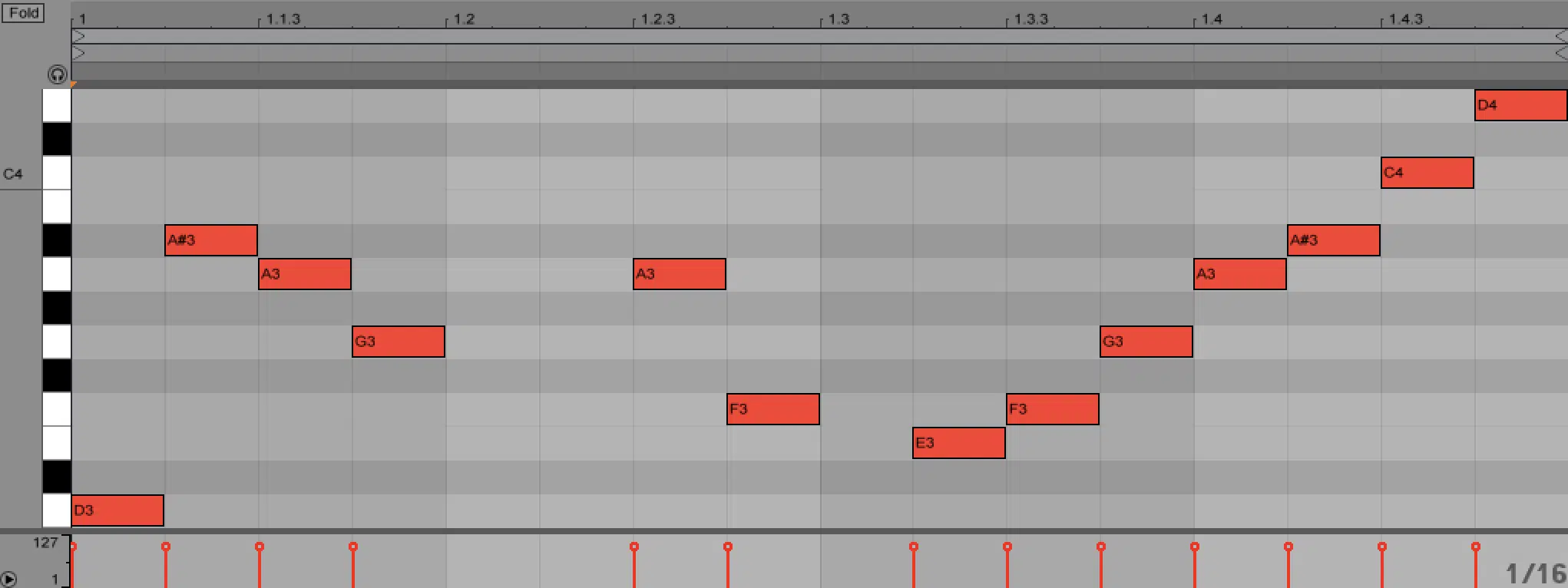
The fusion of rhythm and melody is a powerful tool in music production, particularly in creating dynamic rhythmic melodies.
Rhythm, as a single entity, adds a temporal dimension to the melody, making it more engaging and lively.
Melodies with a compelling rhythm can captivate listeners and drive the momentum of the same song forward.
In music production, the manipulation of rhythm can be facilitated by a variety of software tools.
These tools can help you play around with:
- Different rhythmic patterns
- Syncopation
- Techniques
This will add complexity and an interesting sound to the melodic line.
The use of rhythmic melodies is not just about the notes played but also about the spaces between them (which can create tension and release within the melody).
Creating a good melody, and making music in general, often involves balancing rhythmic complexity with melodic simplicity.
The goal is to maintain the melody’s sing ability while giving it some rhythmic vitality.
This balance is often seen in genres like pop music and vocal music, where the melody needs to be catchy and rhythmically engaging.
Composing Melodic Phrases
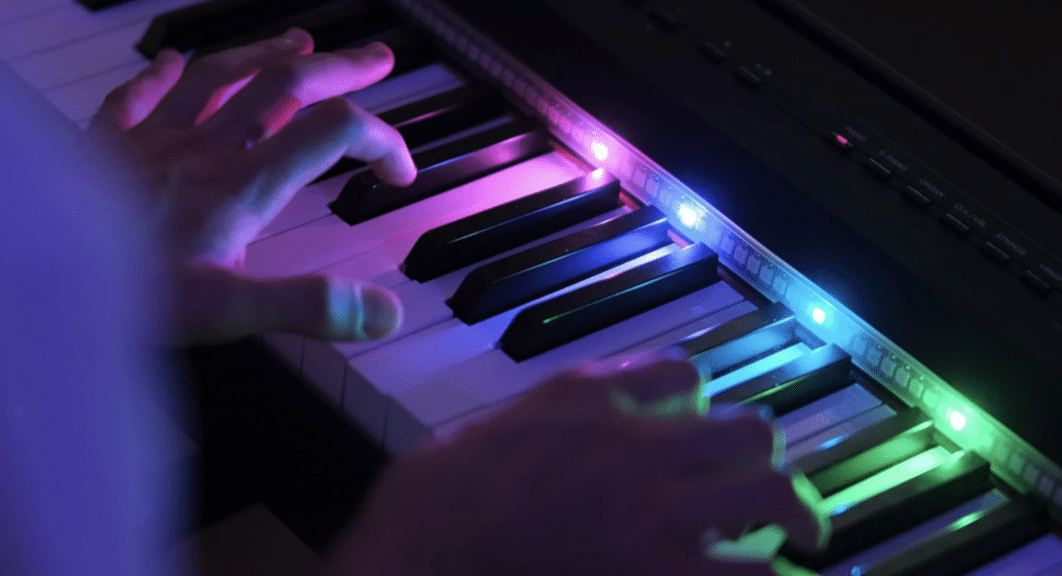
Composing melodic phrases is like writing sentences in a new language.
All the different forms of a melodic phrase conveys a musical idea, contributing to the overall narrative of the melody.
A well-constructed melodic phrase has a clear:
- Beginning
- Development
- Resolution
In digital music production, phrases are often built using a combination of conjunct and disjunct motion, as we touched upon earlier (and will break down later).
Conjunct motion creates smoother, more connected phrases, while disjunct motion offers a bolder, more dramatic effect.
The choice depends on the desired emotional impact and the style of the song.
An effective melodic phrase also considers the use of repetition and variation.
Repetition can reinforce a musical idea, making it more memorable, while variation keeps the melody interesting and dynamic.
It all depends on what you’re trying to achieve and who you’re trying to reach.
Producers and musicians, like yourself, must skillfully balance these elements to create phrases that are both engaging and cohesive within the context of the entire melody.
Vocal Melodies
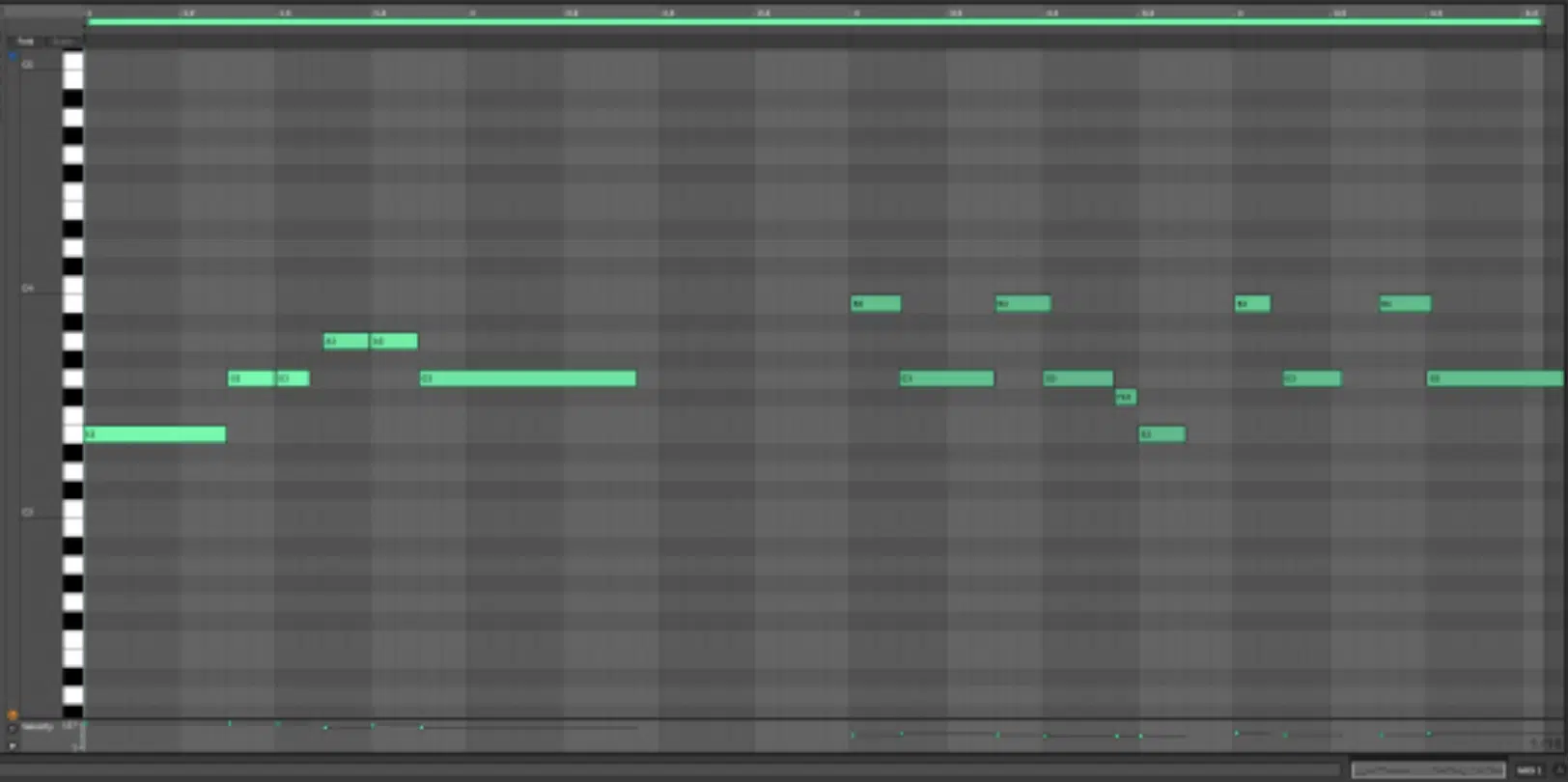
Vocal melodies hold a special place in music production, often being the most memorable melody/part of a song.
They require a careful balance of simplicity and expressiveness.
It allows singers to convey the song’s emotion effectively and gives producers an opportunity to shine creatively behind it.
A well-crafted vocal melody can elevate a song and make it resonate with listeners on a deeper level.
In creating vocal melodies, understanding the vocal range and capabilities of the singer (or musician) is crucial.
The melody should complement the singer’s voice 一 highlighting their strengths and avoiding pitches that are uncomfortable or difficult to sing.
This consideration is very important in popular music (western music), where the vocal performance is a central element.
The lyrics of the song play a significant role in shaping the vocal melody.
The rhythm and phrasing of the lyrics must align with the melody in order to make sure it has a natural feel and fluid vocal delivery.
Just make sure to refine the vocal melody and throw some added effects for fun.
-
Pro Tip: Melodies Built on Only One Pitch
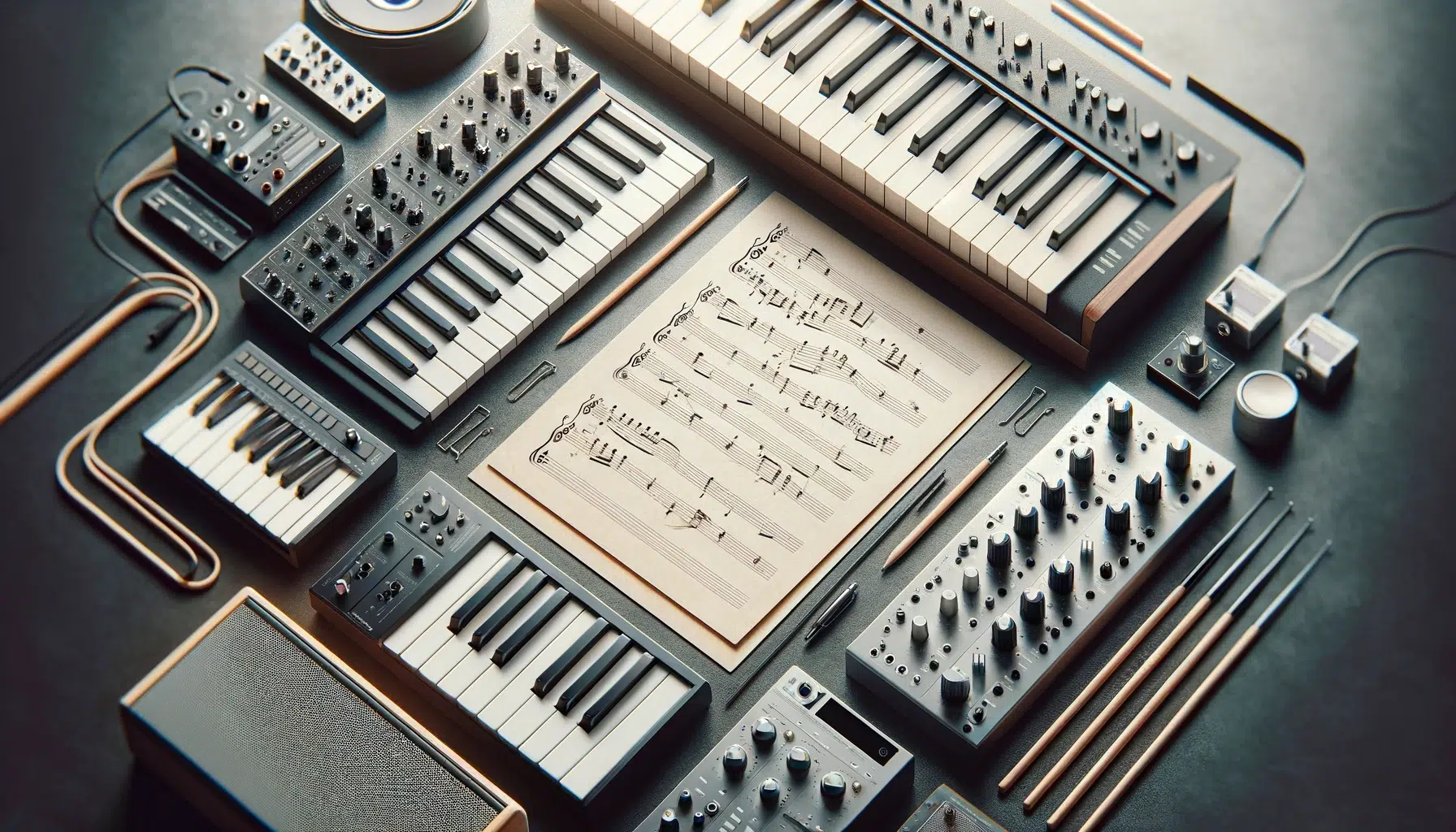
Melodies built on one pitch, also known as monophonic melodies, offer a unique challenge and opportunity for music producers and musicians.
These types of melodies (melody types) rely heavily on rhythm and timbre to maintain interest and convey emotion.
This is because they lack the pitch variation found in more complex melodies.
If you’re new to writing melodies or music notation, try this approach.
Dynamics of Melodic Motion
Melodic motion is a fundamental aspect of melody construction, influencing the flow and feel of the melodic line. So, let’s break down what melodic motion is so you can master complex melodies and play around with some legendary sounds.
-
Exploring the Impact of Conjunct Motion
Conjunct motion in melodies, characterized by stepwise movement between adjacent scale degrees, offers a sense of smoothness and connectivity.
This type of motion is heard in many memorable melodies, particularly in genres like classical music and certain forms of popular music (R&B, pop, etc.).
It creates a natural, flowing progression that is easy for the listener to follow and often more comfortable for singers to perform.
Conjunct motion is a valuable tool for creating melodies with a gentle, approachable, and relatable character.
Think of a simple melody that you were singing in your head for weeks; it probably utilized conjunct motion in some degree.
It allows for a seamless integration of notes 一 providing a cohesive and lyrical quality to the melodic line.
This approach is particularly effective in songs (probably your favorite songs) where a sense of calmness or emotional depth is desired.
This is because it avoids the abruptness and drama of larger leaps in pitch.
NOTE: A great example of a song with conjunct motion is “Shape of You” by Ed Sheeran.

-
The Creative Use of Disjunct Motion in Melodies
Disjunct motion, in contrast, involves larger leaps between non-adjacent notes, creating a more dramatic and impactful melodic line.
This type of motion can add excitement and intensity to the same melody.
It’s often used in music genres that require a strong emotional or dramatic expression, such as certain styles of pop music or vocal music.
Disjunct melodic motion can make a melody stand out 一 offering a striking contrast to more conventional melodic approaches.
Disjunct motion presents an opportunity to experiment with bold and unconventional melodic structures.
It challenges producers to think creatively about how to connect disparate notes in a way that is both musically coherent and emotionally compelling.
The use of disjunct motion can result in melodies that are surprising and engaging, capturing the listener’s attention and leaving a lasting impression.
NOTE: “Rolling in the Deep” is a great example of a song with disjunct motion.

The Beauty of Harmony and Chords in Melodies
Harmony and chords play an integral role in supporting and enriching melodies, providing a sonic backdrop against which the melodic line unfolds.
-
How Chords Enhance Melodic Appeal
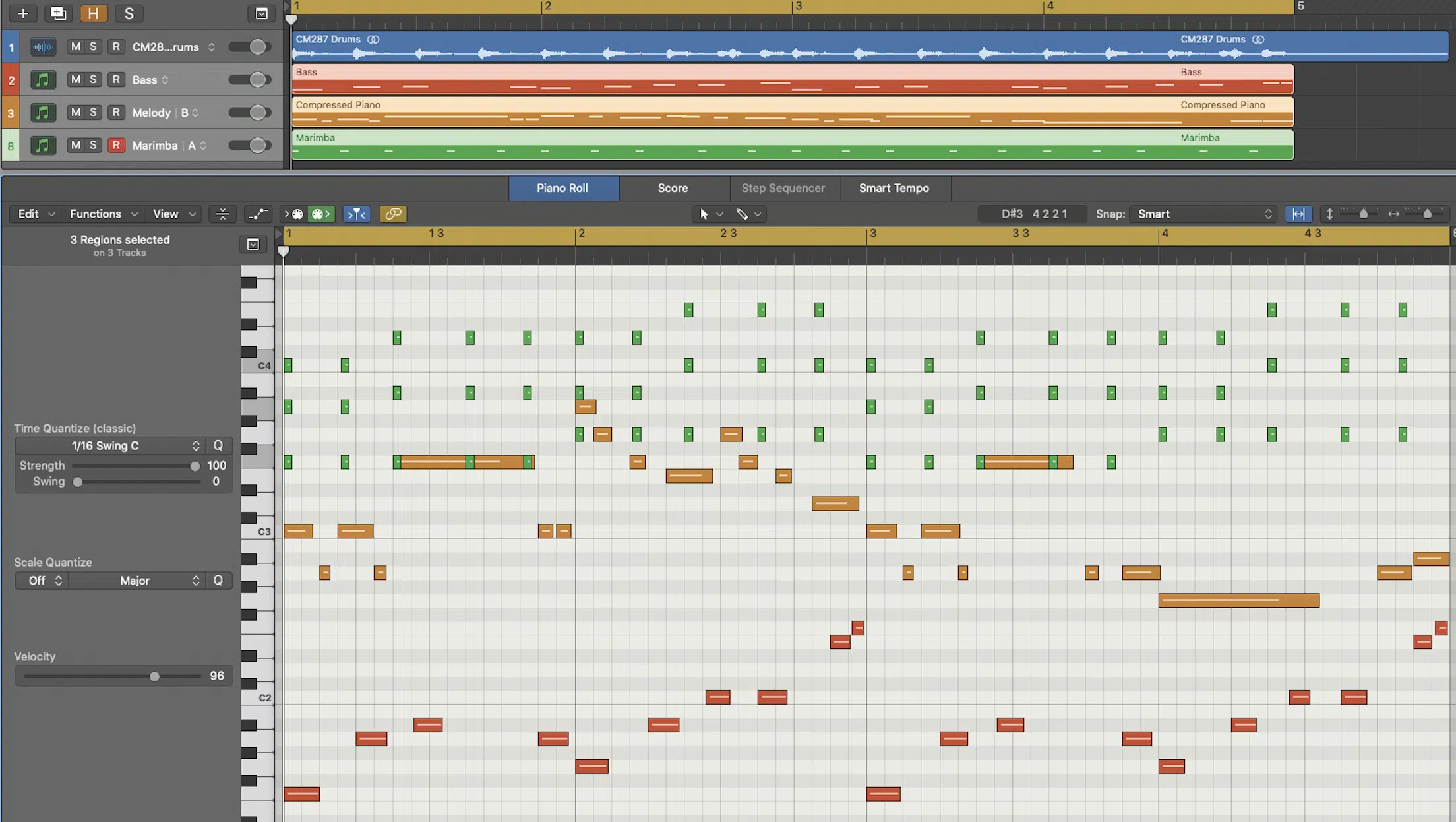
Chords, like these epic chords, provide a harmonic foundation for melodies, adding depth and context to the melodic line.
A well-chosen chord progression can greatly enhance the appeal of a melody, creating a richer and more textured musical experience.
In popular music, the dance between melody and chords is often a defining characteristic (with epic chord progressions being the main attraction).
The use of chords is a fundamental aspect of crafting a melody.
You can experiment with various chord voicings and chord progressions to find the perfect match for the types of melodies you’re aiming for.
The choice of chords can influence the mood and emotion of the melody:
- Major chords 一 Typically convey a sense of happiness.
- Minor chords 一 Often evoke a more melancholic feel.
Additionally, the use of extended chords (for example, seventh or ninth chords) can add a layer of sophistication and complexity to the melody.
These chords offer a wider range of harmonic possibilities, allowing you to create your own melodies that are both captivating and nuanced.
The harmonization of a melody with well-thought-out chords can elevate a simple melodic line into a compelling song.
If you’d like to learn all about the different chord types, we’ve got you covered.
-
The Relationship Between Melody and Harmony
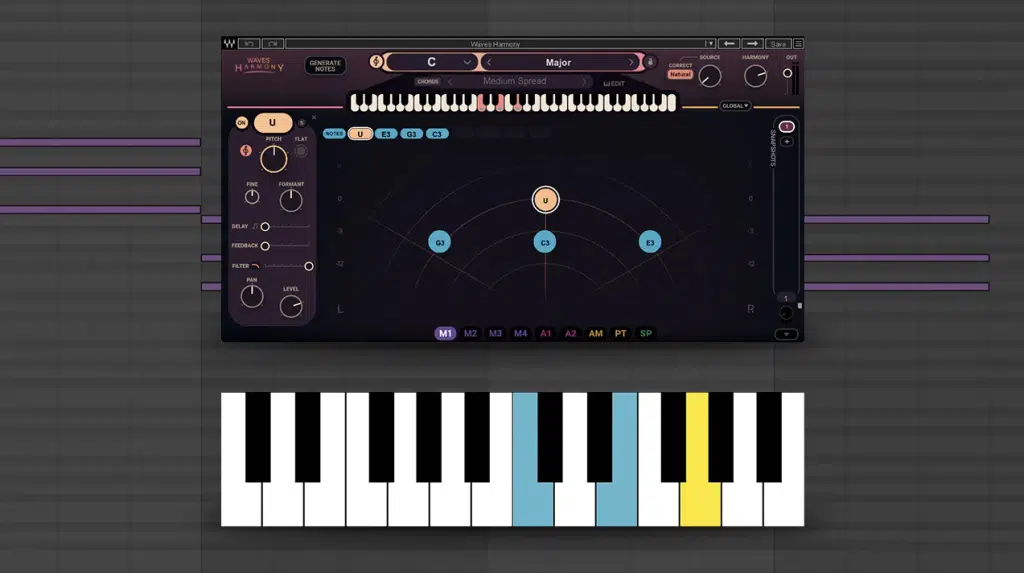
The relationship between melody and harmony is a dynamic and integral part of any musical composition.
Harmony serves to support and enhance the melody, providing a framework within which the melodic line can develop/evolve.
The interaction between these two elements is crucial in creating a cohesive and engaging beat.
In digital music production, understanding this relationship is key to creating effective and impactful melodies.
You must be mindful of how the harmonic structure complements the melodic line 一 ensuring that the two elements work together harmoniously.
For example, you should always:
- Choose the proper chords for your vision
- Consider their rhythmic placement
- See how they interact with the melodic rhythm to decide if it works
The use of harmony in relation to the melody can also vary depending on the genre and style of the music.
In some cases, the harmony may be simple and understated, allowing the same melody to take center stage.
In other instances, a more complex harmonic structure can add depth and richness to the melody 一 making it more intriguing and multifaceted.
It’s about feeling what your song needs and visualizing how you want it to come to life.
Role of Instruments in Melody Creation
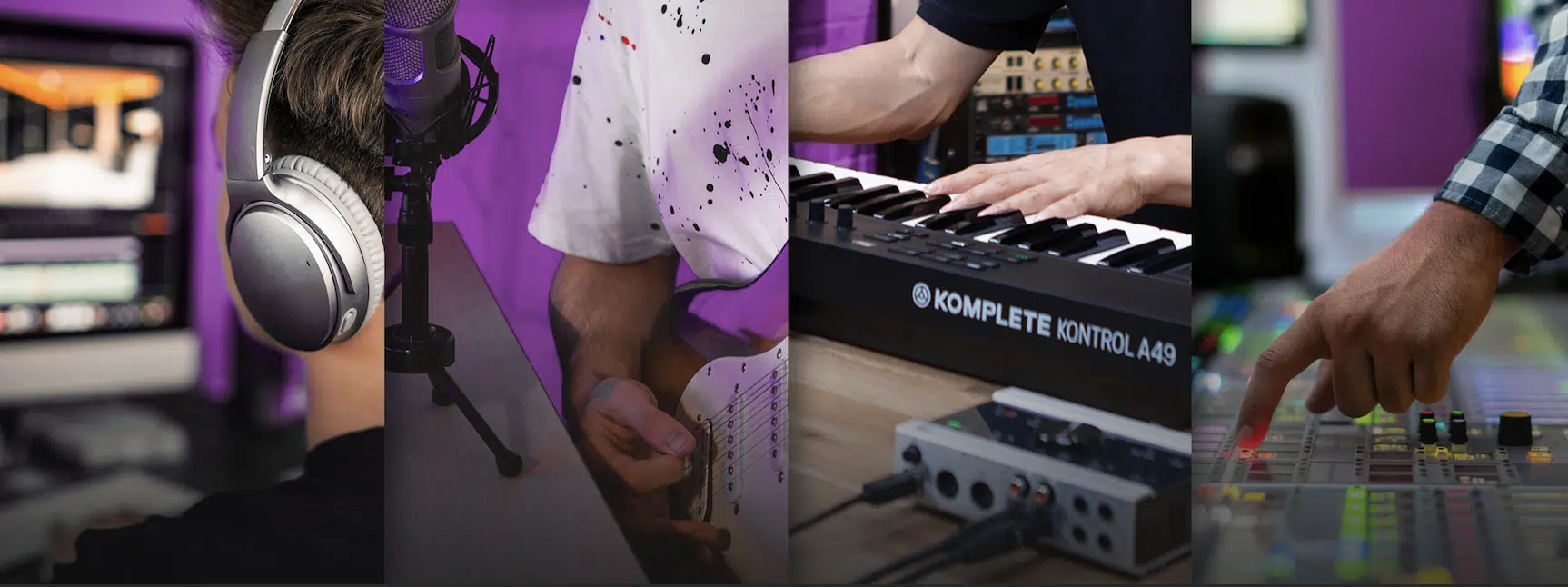
The choice of instruments plays a significant role in the creation and expression of melodies.
Each instrument brings its own unique timbre and character, influencing the overall sound and feel of the types of melodies (melody types) you’re creating.
A great example would be combining the organic sound of a violin with the synthetic textures of a synthesizer.
This can create a melody that resonates both in classical music and modern electronic genres.
When crafting melodies, the choice of many instruments should always align with the desired emotional tone and style of your song.
For example, using a guitar might be ideal for creating melodies with a soft, nostalgic feel, commonly found in pop music.
On the other hand, using a variety of synthesizers can be effective for creating a complex melody with a futuristic sound (ideal for electronic or experimental music).
Feel it out and, like every other melodic component, experiment to see what works best.
Creating Your Own Unique Melodies
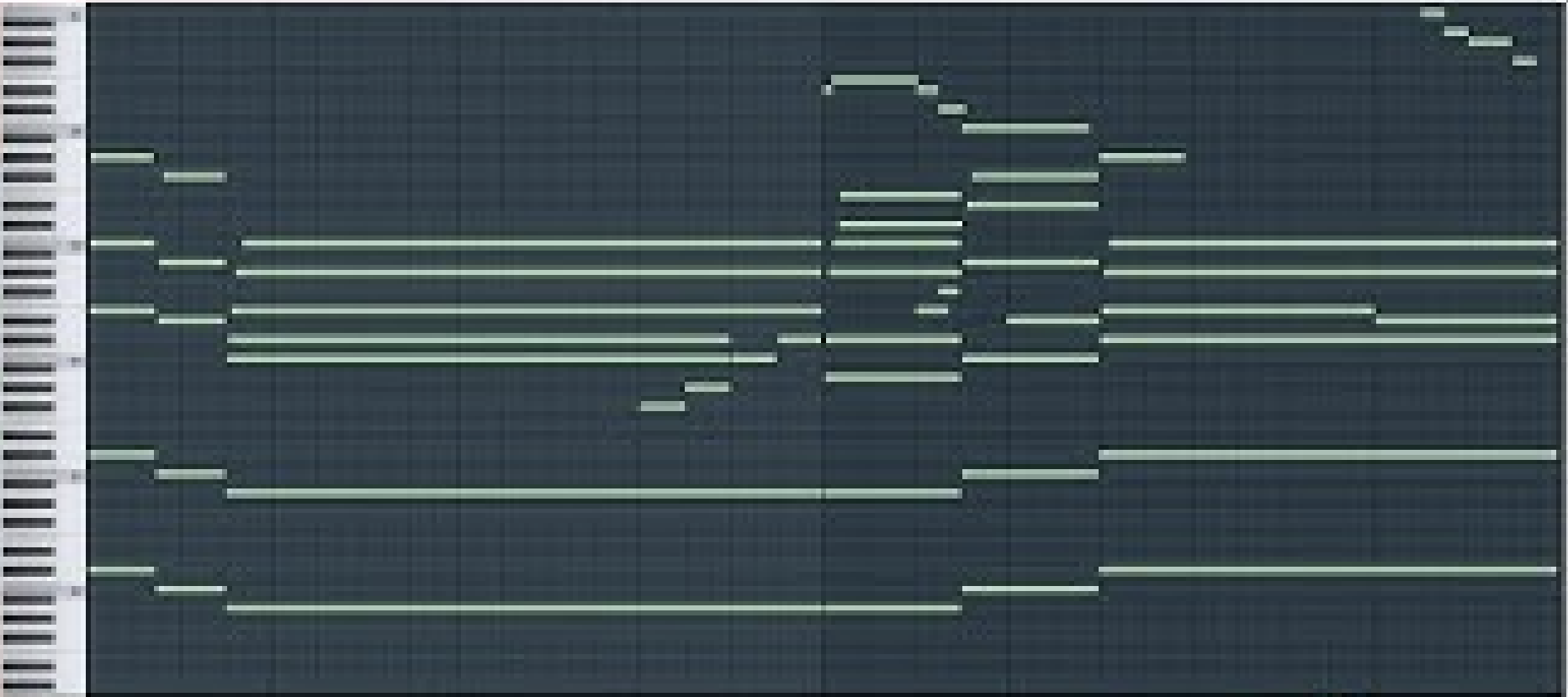
Creating your own melodies involves more than just understanding the basic elements of music…
It requires a deep dive into advanced techniques and the skills to get creative.
One advanced technique you can try out is the use of counterpoint, where two or more melodic lines interact with each other.
This approach creates a rich and complex sonic tapestry.
Another technique is the use of modal scales, which provide a different set of tonalities compared to traditional major scales and minor scales.
Modal scales can infuse a melody with a distinct mood and character, often heard in genres like jazz and world music (even classical music, pop, R&B, and others).
Experimenting with modal scales can open up new avenues for melodic creativity, allowing you to create melodies that stand out from the conventional.
Types of Melodies: Final Thoughts
Understanding all the different types of melodies and their intricate characteristics is key to producing catchy music.
Whether it’s creating complex melodic lines or experimenting with various melodic elements, each step in the journey of mastering these types of melodies is crucial.
As you continue to explore the various types of melodies we covered today, remember the power they hold can transform your tracks from basic to basically irresistible.
Melodies are the backbone of music, and mastering the art of creating captivating types of melodies is what sets apart great music producers.
To assist you in this creative journey, don’t forget to take advantage of this free Essential MIDI Melodies pack.
This invaluable pack, containing 12 unique and hit MIDI melodies, is designed to infuse your tracks with that addictive quality that keeps listeners hitting repeat.
Each melody in the pack exemplifies the diverse types of melodies discussed in this article, offering you a game-changing tool to apply your knowledge.
These aren’t just any MIDI melodies 一 they’re carefully crafted to inspire, elevate your music, and make your tracks shine.
Incorporating these types of melodies (with such freedom to experiment) can completely enhance your songs.
So, embrace the challenge, experiment with these types of melodies, and watch as your tracks captivate and mesmerize your listeners like never before.
Until next time…







Leave a Reply
You must belogged in to post a comment.